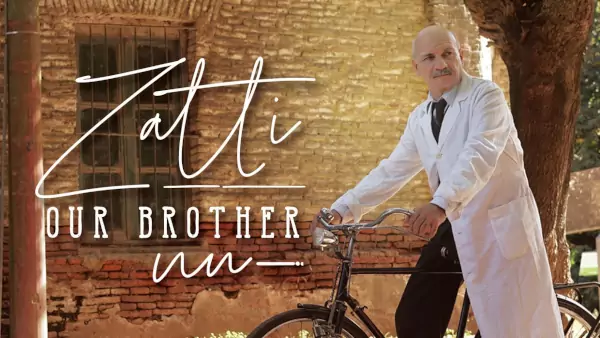04 August - Jean-Marie Vianney, known as the Curé d'Ars or the holy Curé d'Ars, born on 8 May 1786 in Dardilly (near Lyon). He was the parish priest of Ars (then Ars-en-Dombes, now Ars-sur-Formans) for 41 years.
Jean-Marie Vianney was born into a family of farmers from Dardilly, in the Lyon region. At the age of thirteen, Jean-Marie made his First Communion. The commune of Dardilly had been without a teacher since the beginning of the French Revolution and the majority of the children could neither read nor write. At the end of 1803, the municipality appointed a new teacher, whose seventeen-year-old Jean-Marie Vianney attended school. Father Charles Balley, parish priest of Écully since 1803, welcomed the very poorly educated but ardent Jean-Marie to the small presbyteral school he had founded. He is a mediocre pupil, especially because he started studying very late. He has great difficulties, and his knowledge is limited to a little arithmetic, a little history and a little geography. The study of Latin is a torment for him. Father Balley, however, knowing his piety and the mortifications he inflicts on himself, does not doubt his vocation. The Spanish War required many soldiers and Jean-Marie was enlisted in 1809. He was 23 years old and deserted. He settled under a false name in Les Noës, a village of just over 500 inhabitants. The imperial authorities, who refuse to believe that Jean-Marie's father is unaware of his son's hiding place, impose heavy fines to put pressure on him and, finally, Jean-Marie's younger brother agrees to serve in his place in return for an indemnity paid by the father.
No longer a deserter, Jean-Marie was able to return to the presbyteral school in Écully. 22 In 1812, Abbé Balley introduced him to the minor seminary at Verrières. He was very weak in philosophy, although he was given private lessons in this branch in French, whereas it was normally taught in Latin. Like all his less gifted fellow students, he was exempted from the physics year and sent directly to do his theology at the major seminary of Saint-Irénée in Lyon. He was responsible for the establishment, his father having refused to contribute to the boarding expenses. Judged too weak, he was sent back to his parish priest. However, Abbé Balley persuaded the vicars general that Vianney's piety was great enough to make up for his ignorance and the seminarian was ordained priest by Bishop Simon on August 13, 1815 at the major seminary in Grenoble. He was then sent to Écully as vicar to M. Balley. After the death of Mr. Balley, he was appointed chaplain of Ars, a village of the Dombes with about two hundred inhabitants, in the department of Ain, in 1818. His faithful call him their parish priest, although he does not have this title officially, because Ars, which is still a simple chaplaincy attached to the parish of Misérieux, will only become a parish in 1821.
The inhabitants of Ars soon know that their "parish priest" leads an austere life, eating little and giving all he has, and they see him spending many hours in prayer in church, with an expression that makes them think he sees Christ. They conclude that he is a saint. They love him for his cheerfulness, affability, kindness and charity. His reputation for hardly eating or sleeping, for praying day and night and for giving everything he had spread very quickly to the surrounding villages. On the arrival of Father Vianney, the school in Ars, whose only room was a leper room, was run by a teacher from outside the village who taught only in winter. The teaching is poor, moral and religious education is neglected, and, much to Father Vianney's displeasure, the boys and girls are together. In order to remedy this situation, he decided to found a girls' school. For female teachers, he does not want nuns, who "are too much of a lady", but country girls whom he will have trained himself. He distinguishes two young girls, Catherine Lassagne and Benoîte Lardet, and sends them to Fareins to a boarding school for sisters where they acquire in a few months meagre knowledge. Their training as teachers was incomplete, but Father Vianney was especially concerned about the moral and religious instruction of the children. With the help of benefactors, it is supposed that he bought a small house and, in 1824, opened his girls' school there under the name "House of Providence". He appointed Catherine Lassagne, Benoîte Lardet and Jeanne-Marie Chanay as "directors". The latter, who had no training as a teacher, was devoted to manual work. The school being free, families from neighbouring parishes sent their children there. We will soon be accepting boarders. Wealthy benefactors provided regular income for the work, which made it possible to enlarge the house and to take in poor or orphaned girls, even aged twenty, who were fed, educated and maintained free of charge.
Around 1827, the parish of Ars was "converted": many sinners returned to God and religious practice became more regular. These results are not due solely to the action of the parish priest of Ars: the missions, both in Ars and in the surrounding area, produced an important resurgence of religious fervour41. Ars, however, was to take an exceptional place. Very early on, in fact, the reputation of extreme austerity of the parish priest, the diableries of which he was said to be a victim and the miracles attributed to him attracted to Ars an increasing number of people eager to confess to the saint. This movement, known as the pilgrimage of Ars, was particularly strong from 1830 to 1835 and lasted until the death of the priest. The influx of foreigners soon made it impossible for Father Vianney to fully exercise both his duties as parish priest and those of confessor and preacher to the pilgrims. He wanted to be freed from the parish office and proposed that Father Raymond be joined to him. The bishopric of Belley gave satisfaction to the parish priest of Ars.
Fearing that he would be the cause of parishioners damning themselves and therefore be damned with them, he aspired to no longer be parish priest and to withdraw into solitude in order to pray for sinners. He knows that some priests feel that he does not have enough knowledge to exercise the ministry properly. His desire to leave Ars became clear from 1827 or 1828. At least twice, Father Vianney tried to flee Ars. A few weeks after the failed escape, the bishop of Belley, Bishop Chalandon, came to Ars to notify the parish priest that permission to withdraw was refused. Often tempted to despair but always intoxicated with divine love, Father Vianney remained in Ars, where he died on August 4, 1859.
In 1905, he was beatified by Pius X and declared "patron of the priests of France". In 1925, he was canonized by Pius XI. In 1929, he was declared "patron saint of all the priests of the universe" by Pius XI (also known as the patron saint or director saint of all the priests of the Roman Catholic Church in charge of a parish). In 2009, proclamation of the Year of the Priesthood, a Jubilee year for the 150th anniversary of the death of the "holy priest".








